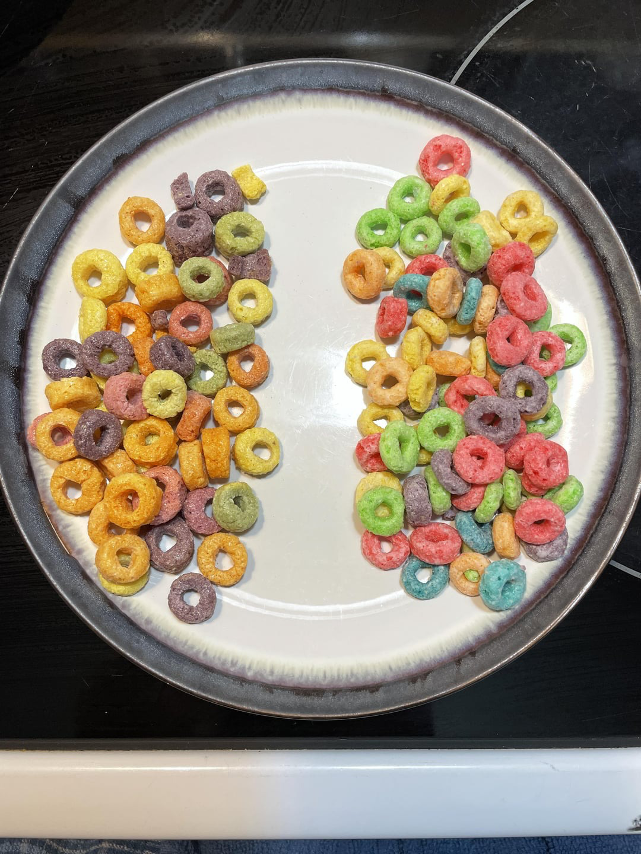Walk Customers to Where They Say They Want to Be
Blindly trusting what your customers say and making rash decisions because of it can be fatal
One of the many ways in which a small business has a leg up on its larger, corporate competition is the close relationships it often shares with its customers. Big companies are simply way too large to have a legitimately familial relationship with any of its customers, save for its largest clients.
Most of us in small businesses know a good chunk (if not all) of our customers by face and by name. You don’t hear the CEO of Walmart say, “Hey, Jim!” as a consumer walks into one of their stores. But you likely can do that – more than likely, you don’t just know Jim, but you know his family, what’s going on in his life, and the struggles he’s currently facing.
As a small business leader, you have the unique ability to hear your customers’ comments and concerns, listen to their feedback, and utilize it to help your business evolve and grow. And that’s crucial, because as much as we often know where we need to head, customers are the ones that ultimately help us point the bus in the right direction in the first place.
But there’s one big problem that I’ve learned over the years: customers may tell you what they want you to do, but very often they’re unhappy when you do exactly that. I’m not trying to be snarky or sarcastic.1 And this isn’t a shot at customers. It’s simply a reality of human nature. Even outside of business, we may think we know exactly what we want, but oftentimes when we get it, something still isn’t right. Maybe we thought it was the solution, but turned out not to be. Maybe there is an unintended consequence we didn’t previously consider. Or maybe it just isn’t what we had hoped.
Take the U.S. budget, for example. The country’s budget for 2025 is projected to be just under $7 trillion. Our deficit for the year is projected to be just under $2 trillion. If you ask every American their feelings about this (and countless surveys have been done to find this data), the vast majority will agree on a few points: (1) the deficit is much too large, and we need to get it under control; (2) there is an incredible amount of waste in government spending; and (3) we definitely need to cut from the budget in order to reach our country’s financial goals.
For the record, it’s nearly impossible to get a vast majority of Americans to agree on anything. But there is bipartisan support for fixing the budget and cleaning up government waste. Yet, when it comes time to take action, most people become irate at what cuts might mean for them. “Don’t touch my Social Security,” “You can’t take money away from our military,” “Our children need more funding, not less.” Do these sound familiar? When you talk about the macro – we need to cut 10% from the budget – people almost universally agree. But when you talk about the micro – e.g. funding for education will go down 10% – there is an uproar.
This type of issue occurs every day in big business, but nowhere more so at the moment than in the food industry. The topic of artificial coloring in foods has gotten more and more attention recently, especially after Secretary of Health and Human Services Robert Kennedy Jr. announced that HHS and the FDA are looking to remove most synthetic dyes from the U.S. supply chain before 2028.
Not only is this something that’s received bipartisan support, but it’s something a majority of U.S. consumers have requested in recent years, as more research uncovers the risks of using these dyes in our food. Most other first-world countries are well ahead of us in terms of their use of natural coloring, and just about everyone agrees that it’s about time we catch up as a country.
Here’s the problem, though: in many real-life case studies over the last decade, companies that have attempted to do this on their own ended up receiving huge backlash from their customers. Why? Because people like what they know. Consumers may state that they want an overarching change, but when you get to the specifics, people may not actually want it.
There are numerous stories of companies receiving backlash just for changing the packaging of their food, let alone the actual formula. At one time, Sprite redesigned their cans to make the lemon appear slightly larger. After they did so, they received countless calls complaining that the soda was now too lemony. But they didn’t actually change the formula. It was the same drink, but people’s perception had changed.
Similarly, there is research showing that the same ice cream tastes better in a cylindrical container vs. a rectangular container. Again, same exact product inside. But the perception changes the reality.
So, let’s say Kellogg wants to take all of the artificial dyes out of their U.S. food tomorrow. It wouldn’t be too hard, as they already have done so in most other countries. Now let’s see what your kid’s Froot Loops will look like tomorrow morning:
You can’t tell me with a straight face that the Froot Loops on the left will “taste” the same as the Froot Loops on the right, even though it’s the same product. Historically, when companies remove artificial dyes from their food, the food becomes less appetizing because the color palette becomes muted. Colors appear paler, and the brightness disappears. It might be healthier, but if Kellogg’s Froot Loops sales are going to plummet in the U.S. because of this change, they can’t take that risk.
This has already been the case, like when General Mills removed artificial dyes from Trix in 2016 and created a big fanfare when they announced it. However, consumers immediately stopped buying the cereal, since the bright, fun colors were no longer there. The company had to reverse course a year later and revert the cereal back to its prior look. There are plenty of examples of this happening. Consumers say, “I want artificial colors removed from my food,” a company says, “Okay,” and then consumers say, “What did you do to my food?” It’s a lose-lose for a company trying to do right by its customers.
To me, the lesson of this endless struggle is to ensure you always walk customers to where they say they want to be. Don’t blindly trust them just because they tell you what they want. It’s easy for people to want X, Y, or Z. But they often don’t know what comes with X, Y, and Z. Instead, ensure you slowly move your customers toward that goal, rather than jumping right to the end. It allows the transition to be smoother, while allowing both you and your customer to go through the process together, step by step.
In fact, one food company achieved this with almost no issue. Back in 2016, Kraft Heinz removed artificial dyes from its famous mac and cheese, and didn’t broadcast it. They simply made the change, and the only thing that changed on the box was within the ingredient list.2 When people finally realized what had happened, it didn’t bother them, because they learned that they’d been eating this “new” product for years and it didn’t look or taste any different. “Let’s make sure that we are not ahead of the consumer, that we’re walking with the consumer,” said Kraft Heinz CEO Carlos Abrams-Rivera in a March 2025 Bloomberg article.
Perhaps a solution for a company like General Mills (or anyone) is to offer consumers choices in the short-term, to ease the transition. Let them see a “naturally-colored” version next to the original version, highlighting the health benefits. It’s inevitable that we will be moving to an artificial-dye-less world in the near future – but help a consumer get there with you, rather than insist they do it right now.
Similarly, for your business, if you’re considering a major change in a policy, a business model, or a product offering, be sure you’re doing it in a way that eases the transition for your customers. Walk them to the end goal. Because even if they asked for exactly what you’re giving them, they still may not be ready for it just yet.
There’s a first.
And let’s be real – is anyone buying Kraft Mac and Cheese reading the ingredient list? You know exactly what you’re getting.



